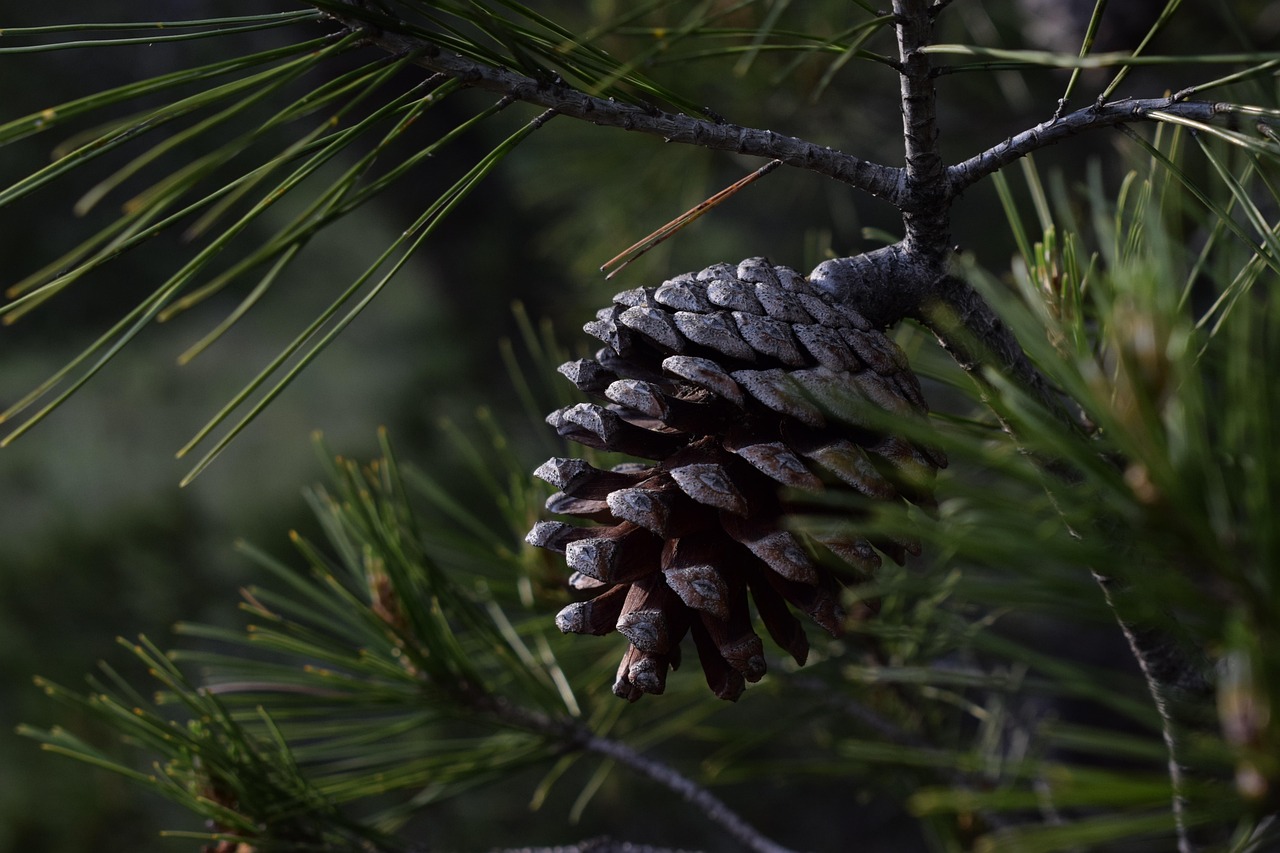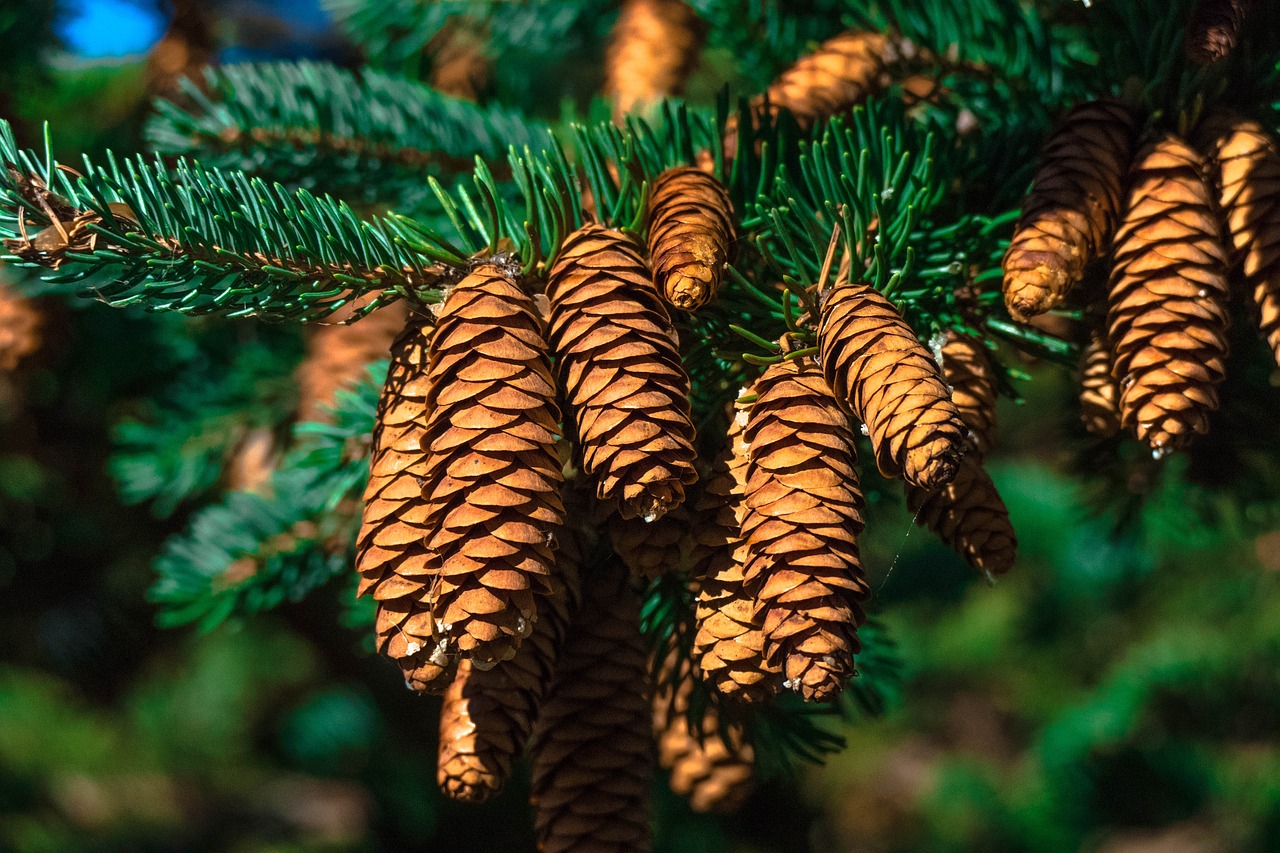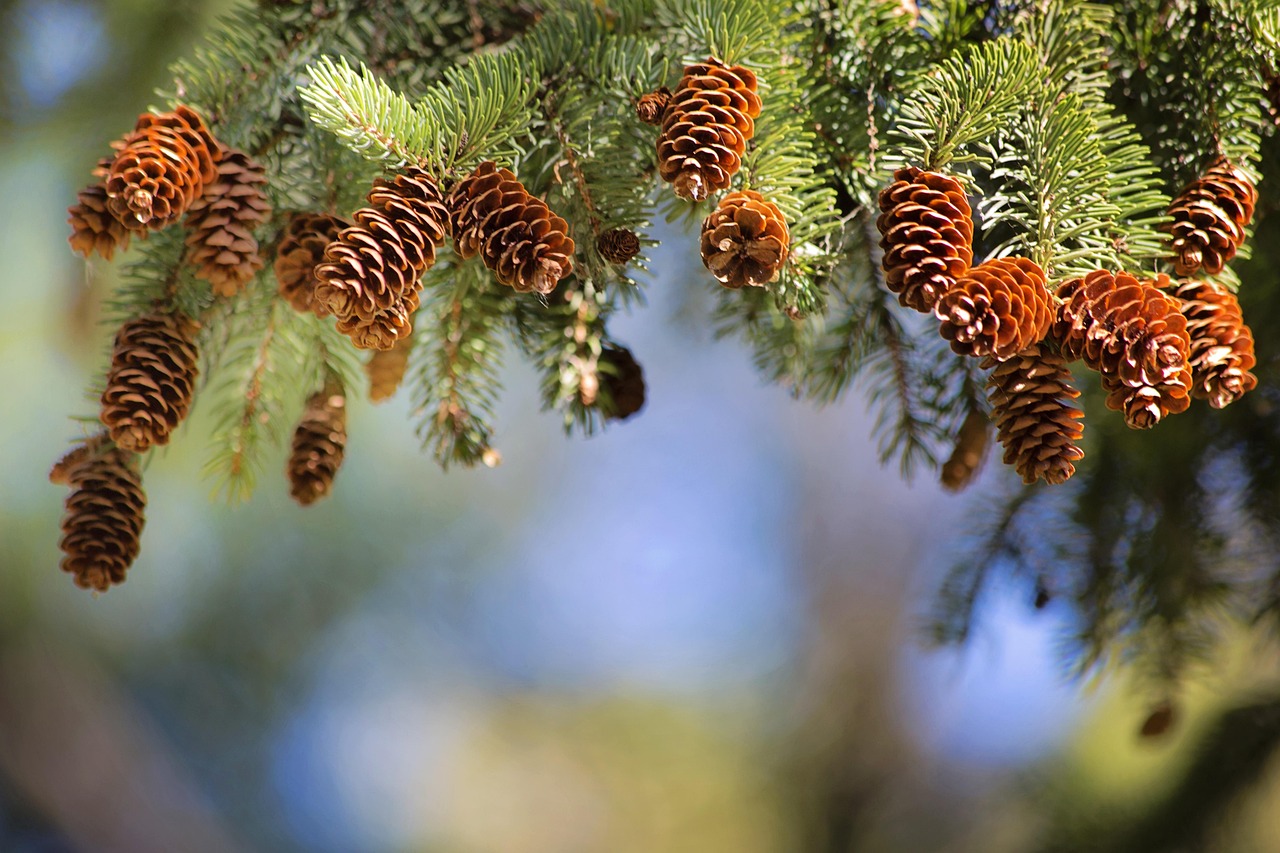Loblolly Pine (Pinus taeda) is not inherently classified as an invasive species. However, its behavior can vary based on the environment and ecosystem in which it grows. In some regions, it may outcompete native species, leading to ecological concerns.
Understanding Loblolly Pine

Loblolly Pine is a fast-growing tree native to the southeastern United States. This species thrives in a variety of soil types and can be found in both wet and dry environments. Its adaptability makes it a popular choice for forestry and timber production. The tree can reach heights of up to 100 feet and has a distinctive appearance, characterized by its tall trunk and long needles.
The scientific name for Loblolly Pine is Pinus taeda. It grows in a range of habitats, from coastal plains to upland areas. The tree plays an essential role in the ecosystem by providing habitat for various wildlife species, including birds and small mammals. Besides its ecological significance, Loblolly Pine is also valued for its wood, which is used in construction, furniture, and paper products.
Characteristics of Loblolly Pine
Loblolly Pine has several distinguishing features that contribute to its popularity. These characteristics include:
- Growth Rate: It is one of the fastest-growing pine species.
- Height: Mature trees can reach heights of 60 to 100 feet.
- Needles: The long, slender needles are typically 6 to 9 inches in length.
- Cones: The cones are 3 to 6 inches long and can take up to two years to mature.
- Bark: The bark is thick and scaly, providing protection against fire and pests.
Habitat and Distribution
Loblolly Pine primarily grows in the southeastern U.S., including states such as North Carolina, South Carolina, Georgia, Alabama, Mississippi, and Louisiana. It prefers moist, well-drained soil but can tolerate drier conditions as well. The tree often forms extensive stands in its native range, contributing significantly to the regional forestry industry.
In addition to its native range, Loblolly Pine has been planted in other regions for commercial purposes. This expansion raises questions about its potential invasiveness outside its natural habitat.
Potential for Invasiveness
The classification of a species as invasive typically depends on its ability to spread rapidly and outcompete native flora. In certain areas where Loblolly Pine has been introduced, it may exhibit invasive characteristics, particularly in disturbed habitats. Some factors that contribute to its potential invasiveness include:
- Rapid Growth: Loblolly Pine can quickly establish itself in suitable environments.
- Seed Production: It produces large quantities of seeds that can be dispersed over considerable distances.
- Adaptability: The tree can thrive in various soil types and climatic conditions.
In regions where it is not native, Loblolly Pine may displace indigenous plant species. This displacement can lead to reduced biodiversity and altered ecosystem dynamics. However, in its native range, it generally coexists with other species without causing significant ecological disruption.
Management Practices
Effective management practices are crucial for maintaining the ecological balance when dealing with Loblolly Pine. Landowners and forest managers should consider several strategies:
- Monitoring growth patterns and spread in non-native areas.
- Implementing controlled burns to manage undergrowth and prevent pine dominance.
- Encouraging the growth of native plant species to restore biodiversity.
- Consulting with local forestry experts for best practices on managing Loblolly Pine populations.
Ecological Impact of Loblolly Pine
The ecological impact of Loblolly Pine can vary greatly depending on its location. In areas where it is native, it plays a vital role in the ecosystem. However, when introduced to non-native regions, it can create significant challenges. Understanding these impacts is essential for effective management and conservation efforts.
Benefits in Native Habitats
In its native range, Loblolly Pine contributes positively to the ecosystem in various ways:
- Habitat Provision: The tree provides shelter and food for a wide range of wildlife, including birds, small mammals, and insects.
- Soil Stabilization: Its extensive root system helps prevent soil erosion, particularly in areas prone to heavy rainfall.
- Carbon Sequestration: As a fast-growing tree, Loblolly Pine absorbs significant amounts of carbon dioxide, helping to mitigate climate change.
- Forest Composition: It supports diverse forest communities by coexisting with other species, contributing to overall biodiversity.
Challenges in Non-Native Areas
When Loblolly Pine is planted outside its native range, it can lead to several ecological challenges:
- Displacement of Native Species: Its rapid growth and adaptability can result in the decline of local flora that cannot compete effectively.
- Altered Habitat Structures: The introduction of Loblolly Pine can change the composition of local ecosystems, affecting the animals that depend on native plants.
- Pest and Disease Issues: When introduced to new environments, Loblolly Pine can become susceptible to pests and diseases that may not exist in its native range.
The Role of Fire in Loblolly Pine Ecosystems
Fire plays a significant role in the health of Loblolly Pine ecosystems. These trees are adapted to survive and even thrive after fire events. Understanding the relationship between fire and Loblolly Pine is crucial for forest management.
Fire Adaptation
Loblolly Pines have developed several adaptations that allow them to flourish in fire-prone environments:
- Thick Bark: The thick bark protects the inner tissues from heat damage during fires.
- Seed Production: Fire often triggers seed release, allowing for regeneration after a fire event.
- Rapid Growth: After a fire, Loblolly Pines can quickly regrow, outcompeting slower-growing native species.
Controlled Burns as a Management Tool
Using controlled burns is an effective management strategy for maintaining healthy Loblolly Pine forests. This practice offers several benefits:
- Reducing Underbrush: Controlled burns help eliminate excess underbrush, reducing competition for resources.
- Promoting Biodiversity: Fire can stimulate the growth of various plant species, enhancing habitat diversity.
- Minimizing Pest Populations: Regularly burning can help control pest populations that may threaten the health of Loblolly Pines.
Loblolly Pine and Climate Change

The impact of climate change on Loblolly Pine ecosystems is an area of growing concern. As temperatures rise and weather patterns shift, the future of this species may be affected. Understanding these potential changes is critical for sustainable forest management.
Potential Effects of Climate Change
Several factors associated with climate change may influence Loblolly Pine populations:
- Altered Growth Rates: Changes in temperature and precipitation patterns could affect growth rates and overall health.
- Pest Pressure: Warmer temperatures may lead to increased pest populations, which can threaten Loblolly Pines.
- Drought Stress: Prolonged periods of drought could impact water availability for Loblolly Pines, affecting their survival.
Adaptive Management Strategies
To mitigate the effects of climate change on Loblolly Pine ecosystems, adaptive management strategies should be implemented. These strategies might include:

- Monitoring climate impacts on forest health and growth.
- Implementing selective thinning to reduce competition and enhance resilience.
- Restoring native plant species to improve ecosystem stability.
- Engaging in research to understand the long-term effects of climate change on Loblolly Pines.
Economic Importance of Loblolly Pine
Loblolly Pine is not only significant ecologically but also plays a crucial role economically. Its value extends across several industries, making it a vital resource in the southeastern United States. Understanding its economic importance helps to underscore the need for sustainable management practices.
Timber Production
One of the primary uses of Loblolly Pine is for timber production. The wood is highly sought after for various applications due to its desirable properties:
- Strength and Durability: Loblolly Pine wood is strong and resistant to wear, making it suitable for construction and structural applications.
- Workability: The wood is easy to work with, allowing for effective machining, shaping, and finishing.
- Aesthetic Appeal: The light color and grain patterns of Loblolly Pine make it popular in furniture and cabinetry.
The timber industry benefits significantly from Loblolly Pine plantations, which are often managed for maximum yield. These plantations can produce high volumes of timber in a relatively short period, contributing to local economies.
Pulp and Paper Industry
In addition to timber, Loblolly Pine is an essential resource for the pulp and paper industry. The tree’s fibers are suitable for producing paper products. Key points regarding its role in this industry include:
- High Pulp Yield: Loblolly Pine offers a high yield of cellulose fibers, which are essential for papermaking.
- Sustainable Sourcing: Managed forests can provide a continuous supply of raw materials while minimizing environmental impacts.
- Support for Local Economies: The pulp and paper industry creates jobs and supports local communities where Loblolly Pine is harvested.
Challenges in Sustainable Management
While Loblolly Pine is economically beneficial, its management presents several challenges that need to be addressed. Balancing economic interests with ecological health is crucial for sustainable forestry practices.
Overharvesting Concerns
Overharvesting of Loblolly Pine can lead to significant ecological issues. Some concerns include:
- Habitat Loss: Excessive logging can destroy habitats for numerous species that depend on forest ecosystems.
- Soil Degradation: Continuous harvesting without adequate replanting can lead to soil erosion and nutrient depletion.
- Biodiversity Reduction: Logging practices that favor monoculture plantations can decrease biodiversity in forested areas.
Pest Management
Pest management is another critical aspect of sustainable Loblolly Pine forestry. Pests such as bark beetles and pine weevils can cause significant damage to Loblolly Pine trees. Effective pest management strategies include:
- Regular Monitoring: Keeping track of pest populations can help identify outbreaks early.
- Integrated Pest Management (IPM): Combining biological, cultural, and chemical methods to control pests sustainably.
- Promoting Biodiversity: Encouraging diverse plant communities can help reduce pest prevalence by attracting natural predators.
The Role of Research and Education
Research and education are vital for promoting sustainable practices concerning Loblolly Pine. Ongoing studies help identify best management practices that balance economic benefits with ecological health.
Research Initiatives
Various research initiatives focus on different aspects of Loblolly Pine management:
- Genetic Studies: Researching genetic diversity can enhance resistance to diseases and pests.
- Growth Patterns: Studying growth responses to environmental changes can inform planting strategies and forest management.
- Impact Assessments: Evaluating the effects of Loblolly Pine on local ecosystems helps managers make informed decisions.
Educational Programs
Education plays a crucial role in promoting sustainable forestry practices. Programs aimed at landowners, forestry professionals, and the general public can foster awareness and encourage responsible management. Key components include:
- Workshops and Training: Offering practical training on sustainable forestry techniques and pest management strategies.
- Community Involvement: Engaging local communities in conservation efforts can strengthen support for sustainable practices.
- Resource Development: Providing educational materials and resources that are accessible to all stakeholders.
Conservation Efforts and Future Directions

As the understanding of Loblolly Pine’s role in ecosystems deepens, conservation efforts become increasingly important. Strategies aimed at preserving both the species and its associated habitats are essential for maintaining ecological balance and supporting sustainable land use.
Conservation Strategies
A variety of strategies can be employed to conserve Loblolly Pine populations and their habitats. These include:
- Establishing Protected Areas: Designating specific regions as protected can help safeguard existing Loblolly Pine forests from development and other harmful activities.
- Restoration Projects: Actively restoring degraded habitats by replanting Loblolly Pines and integrating other native species can enhance biodiversity.
- Monitoring Ecosystem Health: Regular assessments of forest health can help identify threats early, allowing for prompt management responses.
- Community Engagement: Involving local communities in conservation projects fosters a sense of stewardship and responsibility toward their local environment.
The Role of Policy in Conservation
Policy plays a vital role in the conservation of Loblolly Pine and its ecosystems. Effective policies can promote sustainable management practices, protect habitats, and support research initiatives. Key aspects include:
- Incentives for Sustainable Practices: Providing financial incentives to landowners who engage in sustainable forestry practices can encourage responsible management of Loblolly Pine populations.
- Legislation for Habitat Protection: Enacting laws that protect critical habitats ensures that these ecosystems remain intact for future generations.
- Funding for Research: Allocating funds for research on Loblolly Pine ecosystems supports the development of new management strategies and conservation techniques.
Final Thoughts
The Loblolly Pine stands out as a species of significant ecological, economic, and cultural importance, particularly in the southeastern United States. While it is not classified as an invasive species in its native range, its introduction to non-native areas raises valid concerns about its potential to disrupt local ecosystems. Understanding the balance between its benefits and risks is crucial for effective management.
Sustainable forestry practices and education are essential components of ensuring that Loblolly Pine continues to thrive while respecting the integrity of surrounding habitats. By promoting responsible management practices, engaging local communities, and supporting research initiatives, stakeholders can work together to protect this vital species.
As climate change continues to impact ecosystems globally, the adaptive management of Loblolly Pine will play a critical role in maintaining forest health and resilience. The future of Loblolly Pine depends on a collaborative approach that balances economic interests with ecological needs, ensuring that this important tree remains a valuable part of our natural heritage.
